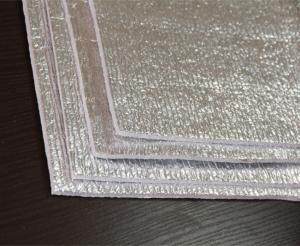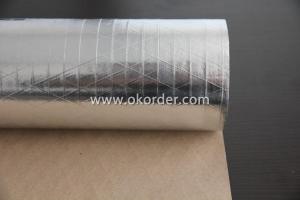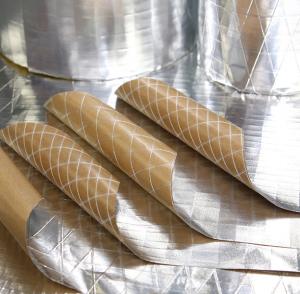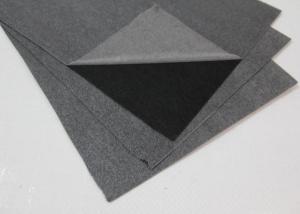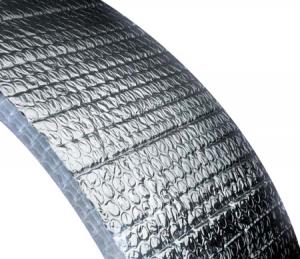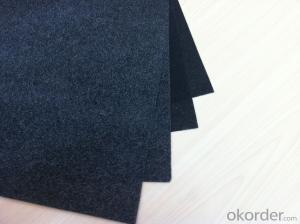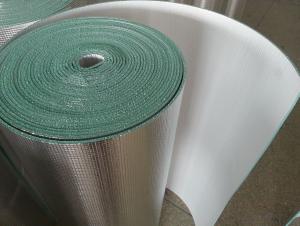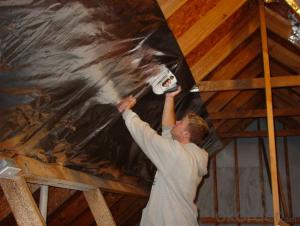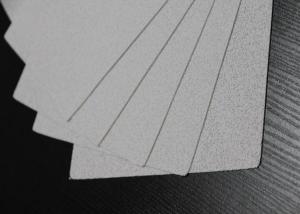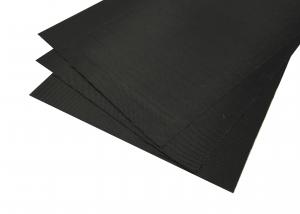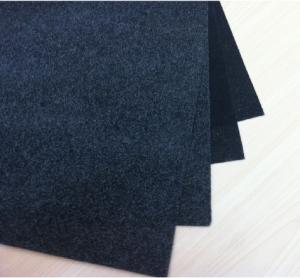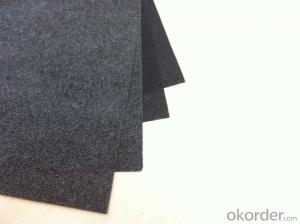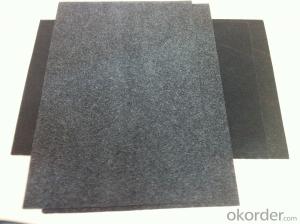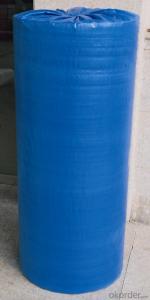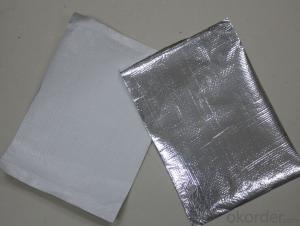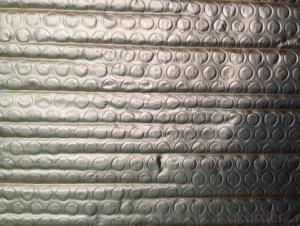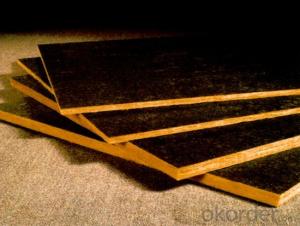BLACK FIBERGLASS TISSUE for ROOF and CEILING ACOUSTIC-50E
- Loading Port:
- Shanghai
- Payment Terms:
- TT OR LC
- Min Order Qty:
- 500 m²
- Supply Capability:
- 100000 m²/month
OKorder Service Pledge
OKorder Financial Service
You Might Also Like
Introduction of Fiberglass Tissue
Fiberglass Tissue is a kind of facing, which is made of by the white fiberglass tissue, and special production process.
Application of Fiberglass Tissue
Our black tissue are mainly used as facing for glass wool insulation, rockwool, mineral wool etc. Also fiberglass tissue facing is used under roof decking, under attic rafters, over existing attic thermal insulation, in floors, walls and crawl spaces, and in industrial and commercial buildings to block radiant heat coming into house through the roof during the summer and retain indoor heat generated during in winter
Advantage of Fiberglass Tissue
Light weight
• High manufacturing accuracy
• High strength
• Small inertia resistance
• Strong heat dissipation ability
• Good visual effect
Packing of Fiberglass Tissue
1. Waterproof paper then PVC shrinking Film
2. Water-Proof film only
3. Woven cloth
4. Kraft paper or Water Proof Film then Metal/wooden pallet
5. (Also as your request. )
Specification of Fiberglass Tissue
Specification | ||
ITEM | UNIT | VALUE |
Type | C | |
Weight | g/m2 | 65±5 |
Thickness | mm | 0.40 |
Tensile Strength MD | n/125px | ≥130 |
Tensile Strength XD | n/125px | ≥90 |
Fiber Diameter | µ | 9 |
Fire Resistant Property | B1 | |
Pictures of Fiberglass Tissue
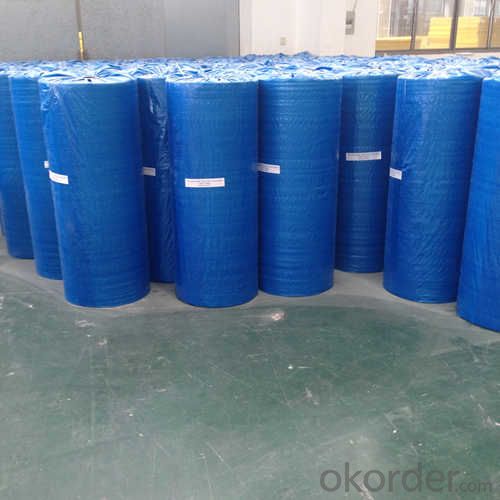
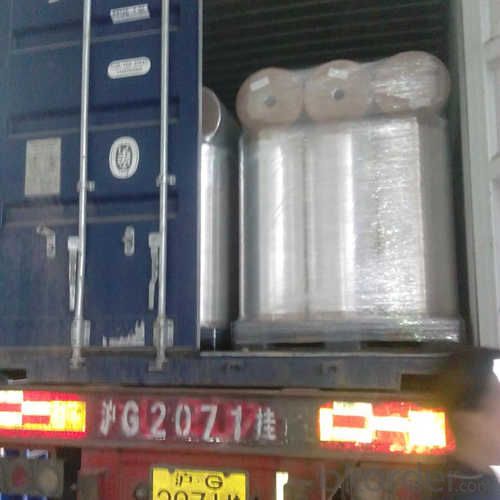

We have organized several common questions for our clients,may help you sincerely: 1. What is the storage condition? The Aluminum Foil Facing should be stored at room temperature and kept from wet and heat source. 2. How to guarantee the quality of the products? We have established the international advanced quality management system,every link from raw material to final product we have strict quality test;We resolutely put an end to unqualified products flowing into the market. At the same time, we will provide necessary follow-up service assurance. 3. How long can we receive the product after purchase? In the purchase of product within four working days, we will arrange the factory delivery as soon as possible. The specific time of receiving is related to the state and position of customers. Commonly 7 to 10 working days can be served.FAQ
- Q:Is fiberglass facing fire-resistant?
- Yes, fiberglass is considered fire-resistant. It is made from a combination of glass fibers and resin, which gives it excellent heat resistance properties. Fiberglass can withstand high temperatures without melting or releasing toxic fumes. It is often used in applications where fire resistance is important, such as insulation, protective clothing, and construction materials. However, it's important to note that while fiberglass itself is fire-resistant, the materials it is used with, such as adhesives or coatings, may affect its fire-resistance properties.
- Q:Are there any health concerns associated with fiberglass facing?
- Yes, there are some health concerns associated with fiberglass facing. Fiberglass is made of tiny fibers that can become airborne and if inhaled, they can irritate the respiratory system. Prolonged exposure to fiberglass can lead to respiratory issues, such as coughing, wheezing, and even a condition called fiberglass lung. It is important to take proper precautions, such as wearing protective gear and working in well-ventilated areas, when handling fiberglass to minimize the health risks.
- Q:How does fiberglass facing contribute to energy efficiency in buildings?
- Fiberglass facing plays a crucial role in enhancing energy efficiency in buildings. This material is typically used as insulation, providing a barrier to heat transfer and reducing the amount of energy needed to maintain a comfortable indoor temperature. One of the primary ways fiberglass facing contributes to energy efficiency is through its high thermal resistance or R-value. The R-value measures the resistance to heat flow, and fiberglass insulation with facing has a higher R-value than materials without facing. This means that it can effectively prevent the transfer of heat between the inside and outside of a building, reducing the need for excessive heating or cooling. Furthermore, fiberglass facing helps to create an airtight seal when installed properly. This prevents the infiltration of drafts or air leaks, which can significantly impact energy efficiency. By sealing off these gaps, fiberglass facing helps to maintain a consistent indoor temperature and reduces the workload on heating and cooling systems. Another important aspect is that fiberglass facing can act as a vapor barrier. It prevents the movement of moisture through the insulation, reducing the risk of condensation and subsequent damage to the building structure. By controlling moisture, fiberglass facing contributes to the overall durability and longevity of the insulation system. In addition to its insulation properties, fiberglass facing is also fire-resistant, which is crucial for building safety. It can help slow down the spread of flames in case of a fire, providing valuable time for occupants to evacuate and for emergency services to respond. Overall, fiberglass facing is a cost-effective and efficient solution for improving energy efficiency in buildings. Its high R-value, ability to create an airtight seal, moisture control capabilities, and fire resistance all contribute to reducing energy consumption, lowering utility costs, and creating a more comfortable and sustainable indoor environment.
- Q:Can fiberglass facing be used in high-temperature applications?
- No, fiberglass facing cannot be used in high-temperature applications. Fiberglass is a type of reinforced plastic material that is known for its excellent thermal insulation properties and resistance to corrosion. However, it has a low melting point and is not suitable for use in high-temperature environments. When exposed to high temperatures, fiberglass can melt, warp, or degrade, compromising its structural integrity and insulation properties. Therefore, it is important to choose alternative materials specifically designed for high-temperature applications, such as ceramic fiber or metal facing, to ensure safety and optimal performance.
- Q:Roof waterproof general use of what materials
- 1. EPDM rubber waterproofing membrane: cold sticky or self-adhesive method. 2. Chlorinated polyethylene waterproofing membrane: cold sticky method. 3. PVC waterproofing membrane: cold sticky method. 4. Chlorinated polyethylene - rubber blend waterproofing membrane: cold sticky method. 5. EPDM - polyethylene blend waterproofing membrane: cold sticky method. 6. Polyurethane waterproof coating: reactive cold construction. 7. Acrylic waterproof coating: cold construction, can be scraping, can be, can be sprayed, but the construction temperature needs to be higher than 4 ℃ when the film.
- Q:Can fiberglass facing be painted or customized?
- Yes, fiberglass facing can be painted or customized. Fiberglass is a versatile material that can be easily painted using various types of paint, such as acrylic or oil-based paint. Before painting, it is important to properly prepare the surface by cleaning it and removing any dirt or debris. Additionally, it is recommended to use a primer to improve adhesion and ensure a smooth finish. Once the primer is dry, you can apply the desired paint color or customize the fiberglass facing using stencils, decals, or other decorative techniques. However, it is essential to use paint and materials that are suitable for outdoor use if the fiberglass facing will be exposed to harsh weather conditions. Overall, with the right preparation and paint, fiberglass facing can be painted or customized to meet your specific aesthetic preferences or design requirements.
- Q:What are the potential drawbacks of using fiberglass facing?
- One potential drawback of using fiberglass facing is its susceptibility to damage and breakage. Unlike other materials like metal or concrete, fiberglass can be easily cracked or shattered if not handled with care. Another drawback is that fiberglass facing is not as strong or durable as some alternative materials, which could limit its use in certain applications that require higher strength or resistance to extreme conditions. Additionally, fiberglass can be more expensive compared to other materials, which may impact the overall cost of a project.
- Q:What are the benefits of using fiberglass facing?
- Fiberglass facing offers numerous advantages in various applications. Firstly, its exceptional strength and durability make it highly resistant to cracking, warping, and other forms of damage. This quality makes it ideal for construction and structural purposes, where strength and longevity are crucial. Furthermore, fiberglass facing provides excellent thermal insulation properties. With its low thermal conductivity, it effectively prevents heat transfer and maintains a consistent temperature in both hot and cold environments. Consequently, it is widely used in insulation for buildings, HVAC systems, and other energy-efficient applications. Another benefit of fiberglass facing is its resistance to moisture and corrosion. Since it is non-porous and does not absorb water, it is highly resistant to mold, mildew, and rot. This makes it a suitable choice for damp or humid environments, including bathrooms and kitchens. Moreover, fiberglass facing is lightweight and easy to handle, making it convenient to install and transport. It can be easily cut and shaped to fit various surfaces and configurations, allowing for flexibility in design and installation. Its lightweight nature also reduces strain on supporting structures, making it cost-effective for construction projects. Lastly, fiberglass facing comes in a wide range of sizes, thicknesses, and finishes, allowing customization to meet specific project requirements. It can be coated or laminated with different materials to enhance performance, such as adding a vapor barrier or reflective surface. This versatility makes it suitable for various applications across industries, from construction to transportation. In summary, the advantages of fiberglass facing include its strength and durability, thermal insulation properties, resistance to moisture and corrosion, lightweight nature, and customization options. These qualities make it a popular choice in industries where these characteristics are highly valued.
- Q:Fiberglass Felt Polyester Powder Adhesive Details
- Glass fiber is an excellent performance of inorganic non-metallic materials, a wide range of advantages is good insulation, heat resistance, good corrosion resistance, high mechanical strength, but the disadvantage is brittle, poor wear resistance.
- Q:Is fiberglass facing resistant to moisture or water damage?
- Fiberglass facing, indeed, possesses remarkable resistance against moisture and water damage. This exceptional property arises from the composition of fine glass fibers interwoven to form a robust and enduring material. Absent any capacity to absorb moisture, these fibers bestow upon fiberglass facing a high degree of resilience, rendering it especially suitable for environments prone to water or moisture exposure, like bathrooms, kitchens, and outdoor spaces. Moreover, its resistance to mold and mildew growth further heightens its ability to endure moisture.
1. Manufacturer Overview |
|
|---|---|
| Location | |
| Year Established | |
| Annual Output Value | |
| Main Markets | |
| Company Certifications | |
2. Manufacturer Certificates |
|
|---|---|
| a) Certification Name | |
| Range | |
| Reference | |
| Validity Period | |
3. Manufacturer Capability |
|
|---|---|
| a)Trade Capacity | |
| Nearest Port | |
| Export Percentage | |
| No.of Employees in Trade Department | |
| Language Spoken: | |
| b)Factory Information | |
| Factory Size: | |
| No. of Production Lines | |
| Contract Manufacturing | |
| Product Price Range | |
Send your message to us
BLACK FIBERGLASS TISSUE for ROOF and CEILING ACOUSTIC-50E
- Loading Port:
- Shanghai
- Payment Terms:
- TT OR LC
- Min Order Qty:
- 500 m²
- Supply Capability:
- 100000 m²/month
OKorder Service Pledge
OKorder Financial Service
Similar products
New products
Hot products
Related keywords




